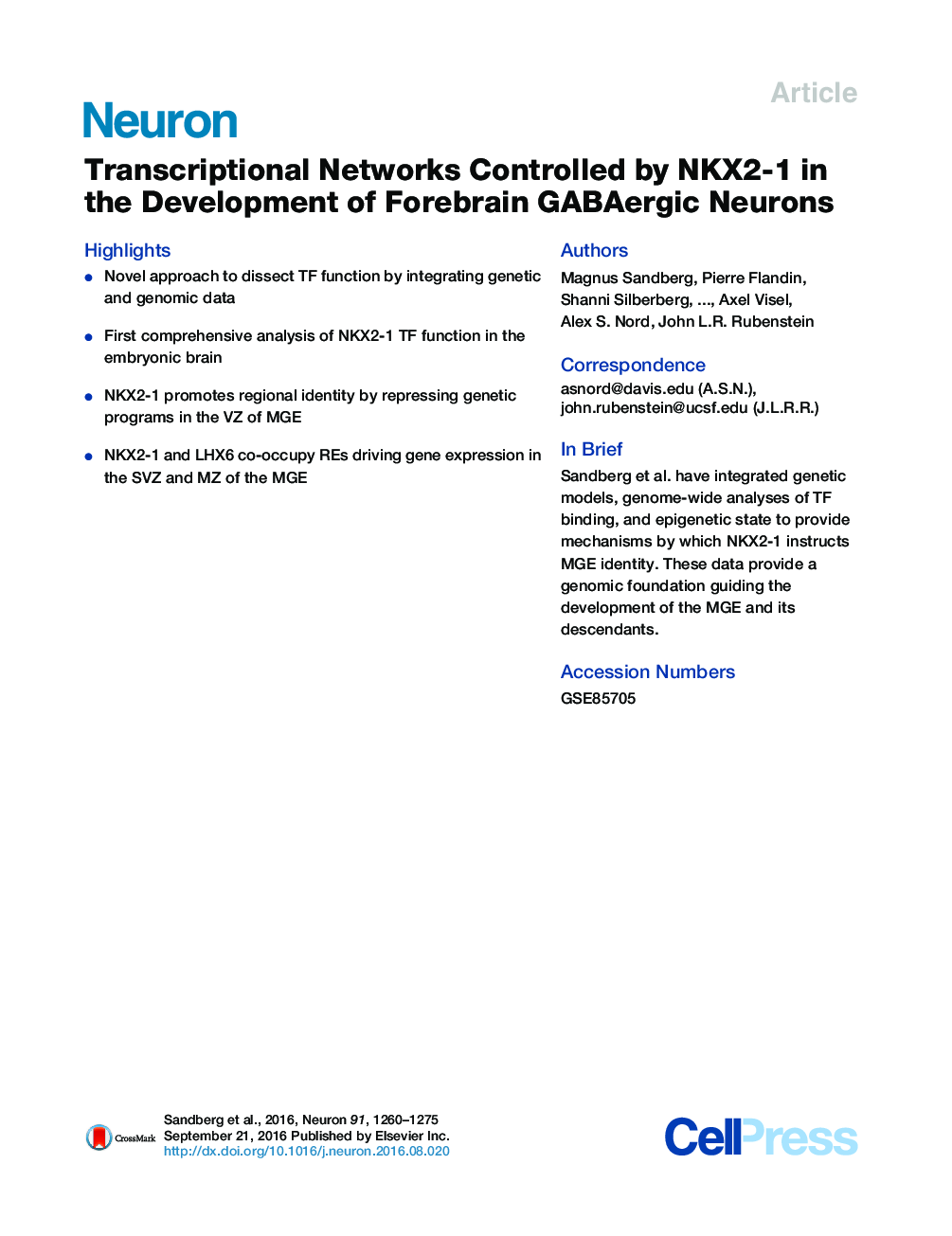| Article ID | Journal | Published Year | Pages | File Type |
|---|---|---|---|---|
| 4320634 | Neuron | 2016 | 16 Pages |
•Novel approach to dissect TF function by integrating genetic and genomic data•First comprehensive analysis of NKX2-1 TF function in the embryonic brain•NKX2-1 promotes regional identity by repressing genetic programs in the VZ of MGE•NKX2-1 and LHX6 co-occupy REs driving gene expression in the SVZ and MZ of the MGE
SummaryThe embryonic basal ganglia generates multiple projection neurons and interneuron subtypes from distinct progenitor domains. Combinatorial interactions of transcription factors and chromatin are thought to regulate gene expression. In the medial ganglionic eminence, the NKX2-1 transcription factor controls regional identity and, with LHX6, is necessary to specify pallidal projection neurons and forebrain interneurons. Here, we dissected the molecular functions of NKX2-1 by defining its chromosomal binding, regulation of gene expression, and epigenetic state. NKX2-1 binding at distal regulatory elements led to a repressed epigenetic state and transcriptional repression in the ventricular zone. Conversely, NKX2-1 is required to establish a permissive chromatin state and transcriptional activation in the sub-ventricular and mantle zones. Moreover, combinatorial binding of NKX2-1 and LHX6 promotes transcriptionally permissive chromatin and activates genes expressed in cortical migrating interneurons. Our integrated approach provides a foundation for elucidating transcriptional networks guiding the development of the MGE and its descendants.
